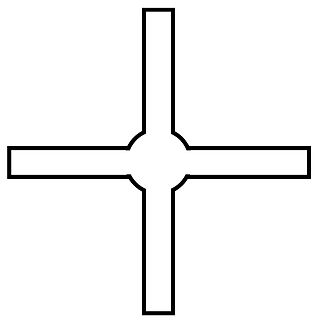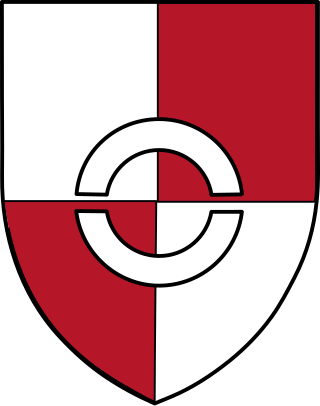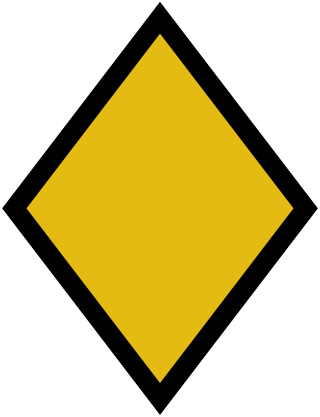| 292nd Infantry Division | |
|---|---|
| 292. Infanterie-Division | |
 Divisional insignia | |
| Active | 6 February 1940 – 4 April 1945 |
| Country | |
| Branch | |
| Type | Infantry |
| Size | Division |
The 292nd Infantry Division was an infantry formation of Nazi Germany during World War II.
| 292nd Infantry Division | |
|---|---|
| 292. Infanterie-Division | |
 Divisional insignia | |
| Active | 6 February 1940 – 4 April 1945 |
| Country | |
| Branch | |
| Type | Infantry |
| Size | Division |
The 292nd Infantry Division was an infantry formation of Nazi Germany during World War II.
The division was formed on 6 February 1940, in the 8th mobilization wave, in Wehrkreis II (Pomerania). It played a small role in the french campaign. Before the invasion of the Soviet Union it was on occupation duty in Poland. It spent most of its subsequent existence with Army Group Centre, on the Eastern Front. In 1941, subordinated to Fourth Army, it took part in the Battle of Moscow, and in 1943 was involved in Operation Citadel.
After the crossed to Bug River with Army Group Centre in mid 1941, it was engaged at Brest and Bialystock, the battle of Yelnya Bend, at Vjasma, and the on way to Moscow. It helped resist the Soviet counter attack in late 1941 and early 1942. It was part of the many defensive actions in 1942 including the battles of Gshatsk and Vjasma, the Rzhev withdrawal in 1943 and the Battle of Kursk where it took very heavy casualties.
Late 1944 saw the division with Ninth Army in the area of the Pripet Marshes, but the successful Soviet liberation of territory during their summer offensives, Operation Bagration and the Lvov-Sandomierz Operation, saw German forces steadily retreating; after a series of fierce defensive battles, the 292nd Infantry Division finally crossed the defense line of the River Narew on 5 September 1944.
Facing the 2nd Belorussian Front on the Narew during the Soviet East Prussian Operation, the division was decimated during a series of defensive actions starting on 14 January. In ten days it was forced back over the border of East Prussia, and cut off from its parent formation, Second Army; by 2 February it had reached Heilsberg, where it was nearly surrounded, but continued to conduct a fighting retreat (though reduced to Kampfgruppe level) along with the remainder of Fourth Army trapped in the Heiligenbeil pocket. The division was finally destroyed in the fight for the town of Heiligenbeil, which fell on 25 March. The survivors were absorbed in the German 170th Infantry Division, a few being evacuated over the Frisches Haff.

The 218th Infantry Division (218.Infanterie-Division) was an infantry division of the German Army that served in World War II.

The 4th Army was a field army of the Wehrmacht during World War II.

The 8th Panzer Division was a formation of the WehrmachtHeer. The division was formed by reorganising the 3rd Light Division in October 1939. It was transferred to the west and fought in the Battle of France, in May 1940, and the German invasion of the Balkans in April 1941. Soon after the division advanced towards Leningrad under Army Group North in Operation Barbarossa, and would remain on the eastern front for the remainder of the war. Staying on defensive fronts, it saw action in the relief of Kholm in 1942, Orel and the withdrawals of Army Group Centre in 1943, until transferred to Army group South. The division then fought in a series of retrograde movements, back through Ukraine, into Hungary and finally into Silesia and surrender in May 1945.

The 61st Infantry Division was a combat division of the German Army during the Second World War. Towards the end of the war, it became the 61st Volksgrenadier Division.
The 11th Panzer Division was an armoured division in the German Army during World War II, established in 1940.

The 4th Panzer Army, operating as Panzer Group 4 from its formation on 15 February 1941 to 1 January 1942, was a German panzer formation during World War II. As a key armoured component of the Wehrmacht, the army took part in the crucial battles of the German-Soviet war of 1941–45, including Operation Barbarossa, the Battle of Moscow, the Battle of Stalingrad, the Battle of Kursk, and the 1943 Battle of Kiev.

The 20th Panzer Division was an armoured division in the German Army during World War II. It was created from parts of the 19th Infantry Division.
The 5th Rifle Division was an infantry division of the Soviet Union's Red Army, formed twice. The division was formed in 1918, initially as the 2nd Penza Infantry Division. After becoming the 5th Rifle Division a month later, it fought in the Counteroffensive of Eastern Front in spring 1919 and later operations in Siberia. In the spring of 1920, the division was relocated west and fought in the Polish–Soviet War, participating in the Battle of Warsaw. The division was awarded the Honorary Revolutionary Red Banner for its actions during the wars in 1929. In September 1939, it fought in the Soviet invasion of Poland and was then sent to Lithuania under the Soviet–Lithuanian Mutual Assistance Treaty. After Operation Barbarossa, the division fought in the Baltic Operation and the Leningrad Strategic Defensive. During the winter of 1941-1942, it participated in the Battle of Moscow, fighting in the Kalinin (Tver) area. During the summer of 1942, the division fought in the Rzhev-Vyazma Offensive and became the 44th Guards Rifle Division for its actions there on 5 October.

The 58th Infantry Division was a unit of the German Army (Wehrmacht) during World War II. It was formed in 1939, took part in the Battle of France in 1940, and then Operation Barbarossa in 1941. The 58th was then constantly engaged on the Eastern Front until the end of the war in 1945.

The 102nd Infantry Division was a German military infantry division during World War II. It served on the Eastern Front, fighting in the Rzhev salient and the Battle of Kursk. It was destroyed during the latter stages of the Soviet Red Army's East Prussian Offensive in 1945.

The 14th Infantry Division was a formation of the Germany Army (Wehrmacht) which fought during World War II.

The 56th Infantry Division was a German infantry division which fought during World War II.

The VI Corps was an infantry corps of the German Army. It fought in several notable actions during World War II.

The 36th Infantry Division was a German infantry formation of World War II. It was formed in Kaiserslautern on 1 October 1936. During World War II it was mobilized in August 1939, as part of the first wave. It was later reorganized and re-designated the 36th Infantry Division (mot) in November 1940. It was then de-motorized, reorganized and re-designated the 36th Infantry Division on 1 May 1943. The division was destroyed at Bobruysk in June 1944 during the Soviet Operation Bagration. It was reformed on 3 August 1944 as the 36th Grenadier Division and renamed the 36th Volksgrenadier Division in October 1944.
IX Army Corps was a corps in the German Army during World War II. It was formed on 1 October 1934 under the command of General Friedrich Dollman in Kassel with the camouflage name of Kassel and redesignated IX Corps after the creation of the Wehrkreis IX recruitment and training area.

The 111th Infantry Division was a major unit of the German Wehrmacht. Formed in late 1940 in the further expansion of the German army it was committed to the campaign against Russian, and spent 3 years on the eastern front. The division was finally trapped in the Crimea and destroyed in the spring of 1944.

The 269th Infantry Division was a major fighting formation of the German Army (Wehrmacht). It was created in August 1939, and first saw combat in the Battle of France, and was then posted to occupation duties in Denmark. In the summer of 1941 the division advanced towards Leningrad in operation Barbarossa as part of Army Group North. Following the final drive on the city and the subsequent siege, the division spent the winter and the next summer in defensive action along the Volkov river front, combating repeated Soviet attempts to restore land communications to Leningrad.
The 48th Army was a field army of the Soviet Red Army, active from 1941 to 1945. The army was first formed in August 1941 and fought in the Leningrad Strategic Defensive Operation. The army suffered heavy losses and was disbanded in early September. Its remnants were moved to the 54th Army. Reformed in April 1942 on the Bryansk Front, the army fought in the Maloarkhangelsk Offensive in the winter of 1943. It was sent to the Central Front in March and defended the northern face of the Kursk Bulge. During the summer, it fought in Operation Kutuzov and the Chernigov-Pripyat Offensive. From November, the army fought in the Gomel-Rechitsa Offensive. The army fought in Operation Bagration from June 1944. During the offensive, the army captured Zhlobin and Bobruisk and was on the Narew by early September. During early 1945, the army fought in the East Prussian Offensive and ended the war in East Prussia during May. The army was transferred to Poland in July 1945 and its headquarters was used to form the Kazan Military District in September.

The 258th Infantry Division was an infantry unit of the German Army in World War II.
The 252nd Infantry Division was an infantry division of the German Heer during World War II.